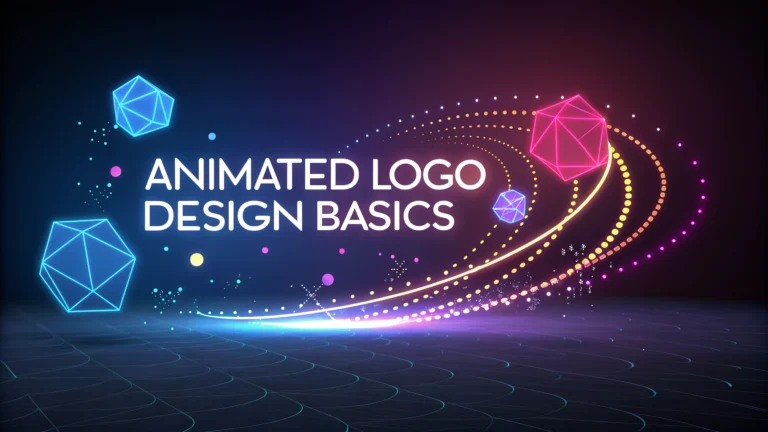Animated logos bring static brand identities to life through carefully crafted motion and dynamic elements.
A well-designed animated logo can capture attention in ways traditional static logos cannot, especially on digital platforms and social media.
Key Elements of Animated Logo Design
- Motion path planning
- Timing and pacing
- Color transitions
- Shape morphing
- Sound integration (optional)
Software Tools for Animation
- Adobe After Effects – Industry standard for professional animation
- Adobe Animate – Excellent for vector-based animations
- Blender – Free, open-source 3D animation software
- Cinema 4D – Preferred for 3D logo animations
Technical Specifications
| Platform | Format | Duration |
|---|---|---|
| Websites | GIF, SVG, HTML5 | 2-5 seconds |
| Social Media | MP4, GIF | 3-7 seconds |
| Video Intros | MOV, MP4 | 5-10 seconds |
Design Tips
Keep animations simple and purposeful – avoid unnecessary movements that might distract from your brand message.
Ensure your animated logo works equally well in both static and motion states.
Consider load times and file sizes when designing for different platforms.
Common Animation Styles
- Build-up – Elements appear sequentially
- Morphing – Shapes transform smoothly
- Rotation – Elements spin or revolve
- Bounce – Playful movement with elastic effects
- Fade – Elements gradually appear or disappear
File Optimization
- Compress files without losing quality
- Use appropriate color modes (RGB for digital, CMYK for print)
- Export in multiple formats for different uses
- Test across various devices and platforms
Common Mistakes to Avoid
- Over-animating elements
- Making animations too long
- Ignoring mobile responsiveness
- Using complex animations that slow down websites
Test your animated logo across different browsers and devices before finalizing the design.
Consider creating a simplified version for situations where complex animations might not be appropriate.
Resources
- Creative Bloq – Tutorials and inspiration
- Behance – Animation portfolios and examples
- Motionographer – Industry news and showcases
Implementation Process
Successful animated logo creation follows a structured workflow from concept to final delivery.
Project Phases
- Initial sketching and storyboarding
- Static logo refinement
- Animation prototyping
- Client feedback integration
- Final rendering and delivery
Performance Considerations
Animation performance directly impacts user experience and brand perception across digital platforms.
Optimization Checklist
- Frame rate optimization
- File size reduction
- Browser compatibility testing
- Loading time assessment
Future Trends
Emerging technologies continue to shape the evolution of animated logo design.
Rising Trends
- Responsive animations
- AI-powered motion graphics
- Interactive logo experiences
- WebGL and 3D animations
Conclusion
Animated logos represent a powerful tool for modern brand expression, combining traditional design principles with dynamic motion. Success depends on balancing creative innovation with technical constraints and user experience considerations.
As digital platforms evolve, animated logos will continue to play a crucial role in brand communication, making it essential for designers to stay current with both creative and technical developments in the field.
FAQs
- What is an animated logo and why is it important for branding?
An animated logo is a dynamic version of a static logo that incorporates movement, transitions, and visual effects. It’s important for branding because it enhances viewer engagement, improves brand memorability, and helps businesses stand out in digital platforms like websites, social media, and video content. - What are the key elements to consider when designing an animated logo?
Key elements include simplicity, timing, smooth transitions, brand consistency, scalability, file format compatibility, and ensuring the animation enhances rather than overwhelms the logo’s core message. - Which software tools are commonly used for animated logo design?
Popular tools include Adobe After Effects, Cinema 4D, Adobe Animate, Blender, and Motion by Apple. For simpler animations, tools like Adobe Photoshop (for GIFs) and online platforms like Canva Pro can also be used. - How long should an animated logo sequence be?
Typically, animated logos should be between 2-5 seconds long. Anything longer risks losing viewer attention, while shorter animations might not achieve the desired impact. - What file formats are best for animated logos?
Common formats include GIF for simple animations, MP4 or MOV for high-quality video animations, JSON for web-based animations, and SVG for scalable vector animations. The choice depends on the intended platform and use case. - How can I ensure my animated logo looks good across different platforms?
Design with responsive principles in mind, test across multiple devices and platforms, maintain appropriate file sizes, and create variations optimized for different contexts (social media, websites, presentations). - What are the most effective animation techniques for logos?
Effective techniques include morphing, rotation, fade-ins/outs, scaling, color transitions, and revealing elements sequentially. The choice should align with the brand’s personality and message. - How much should animated logo design cost?
Professional animated logo design typically costs between $500-$5000, depending on complexity, animation style, number of variations needed, and designer expertise. - Should the animated logo have sound effects?
Sound effects are optional and should be considered based on usage context. For versatility, design the animation to work effectively both with and without sound. - Can an existing static logo be converted into an animated version?
Yes, existing logos can be animated by breaking down elements into layers, planning movement patterns, and applying appropriate animation techniques while maintaining brand integrity.








